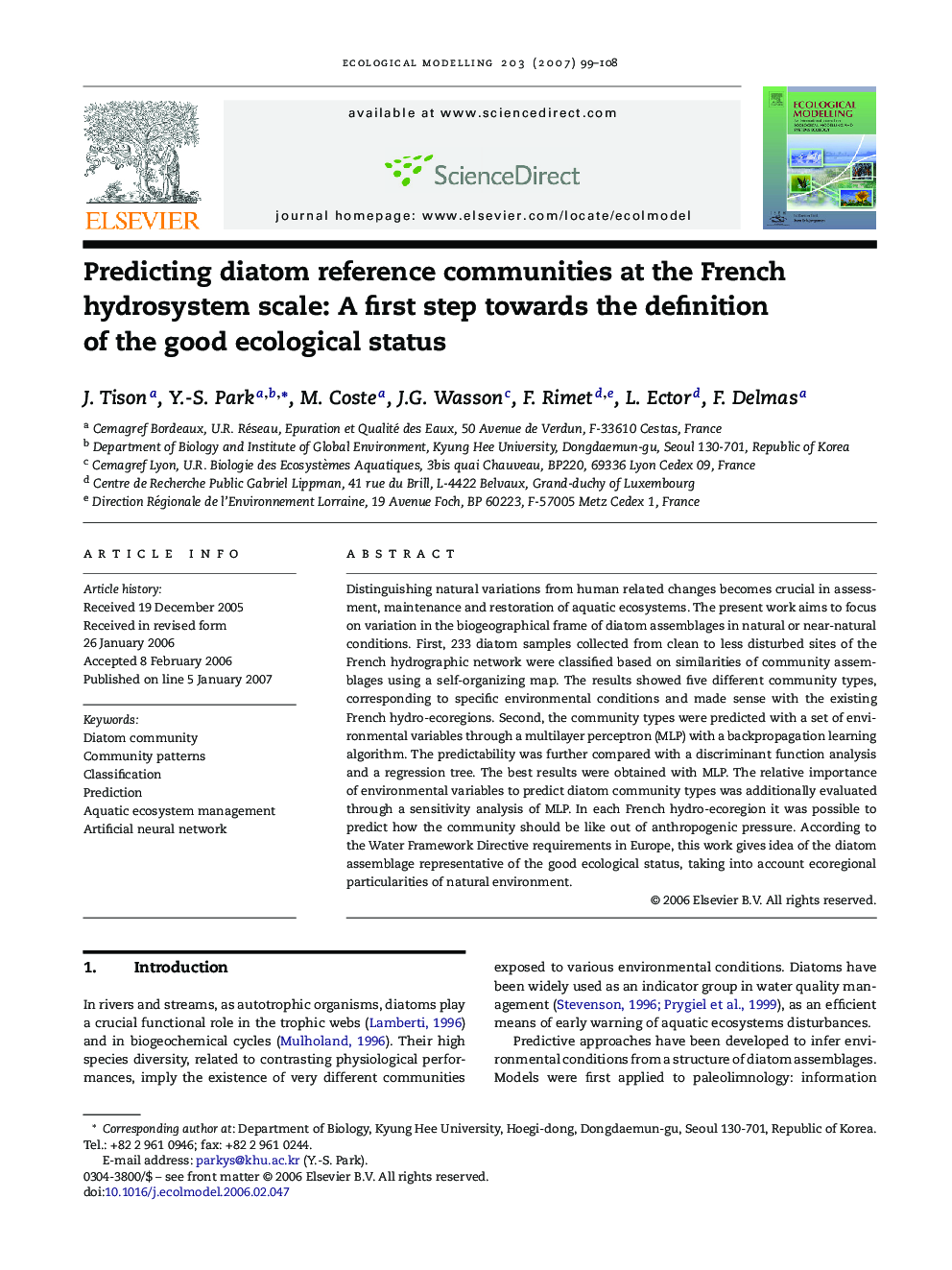| کد مقاله | کد نشریه | سال انتشار | مقاله انگلیسی | نسخه تمام متن |
|---|---|---|---|---|
| 4378697 | 1617551 | 2007 | 10 صفحه PDF | دانلود رایگان |

Distinguishing natural variations from human related changes becomes crucial in assessment, maintenance and restoration of aquatic ecosystems. The present work aims to focus on variation in the biogeographical frame of diatom assemblages in natural or near-natural conditions. First, 233 diatom samples collected from clean to less disturbed sites of the French hydrographic network were classified based on similarities of community assemblages using a self-organizing map. The results showed five different community types, corresponding to specific environmental conditions and made sense with the existing French hydro-ecoregions. Second, the community types were predicted with a set of environmental variables through a multilayer perceptron (MLP) with a backpropagation learning algorithm. The predictability was further compared with a discriminant function analysis and a regression tree. The best results were obtained with MLP. The relative importance of environmental variables to predict diatom community types was additionally evaluated through a sensitivity analysis of MLP. In each French hydro-ecoregion it was possible to predict how the community should be like out of anthropogenic pressure. According to the Water Framework Directive requirements in Europe, this work gives idea of the diatom assemblage representative of the good ecological status, taking into account ecoregional particularities of natural environment.
Journal: Ecological Modelling - Volume 203, Issues 1–2, 24 April 2007, Pages 99–108